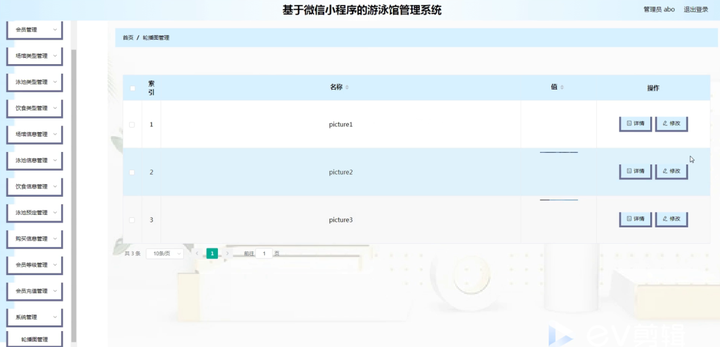文章目录
- 基本概念
- 单列索引
- 普通索引(index)
- 唯一索引(unique)
- 主键索引
- 组合索引
- 全文索引(fulltext)
- 空间索引(spatial)
- MySQL存储引擎
基本概念
-
通过某种算法,构建数据模型,用于提高数据库查询的效率
-
索引的原理:
哈希(hash)索引
索引值x—>f(x)—>地址
哈希冲突:多个索引值对应一个地址
优点:通过字段值计算hash值,定位数据速度快
缺点:不能使用范围查询
二叉树
左子树小于根节点,右子树大于根节点
缺点:可能产生不平衡,形成向右的斜线,类似链表结构
平衡二叉树
特点:与二叉树相比,左右子树的深度之差不超过1
缺点:插入数据时需要旋转,范围查询时需要回旋,效率低
B+TREE索引
特点:所有数据都存储在叶子节点,使用双向链表存放,非叶子节点不存储数据,当范围查找时很方便
下面两幅图分别为B-TREE和B+TREE


MyISAM引擎叶节点存放的是数据地址
InnoDB引擎叶节点存放的是数据,效率高于MyISAM,但需要额外的磁盘空间
- 创建索引的原则
1. 更新频繁的列不设置索引
2. 数据量小的表不设置索引
3. 重复数据多的列(超过15%)不设置索引
4. 先考虑对where和order by子句中经常出现的列建立索引 - 索引的优点
1. 加快数据检索速度
2. 使用分组和排序进行数据查询时,可以减少排序和分组的时间
3. 唯一索引,避免同一个字段出现重复的值
4. 加速表和表之间的连接 - 索引的缺点
1. 创建索引和维护索引需要时间成本,并且随着数据量的增加而增加
2. 索引需要占物理空间,除了数据表占用数据空间外,每一个索引还要占一定的物理空间
3. 降低数据更新表的速度,因为索引需要动态维护
create database IF NOT EXISTS mydb_index;
use mydb_index;
单列索引
- 一个索引只包含一个列,一个表中可以有多个单列索引
包含普通索引、唯一索引和主键索引
普通索引(index)
- 没有限制,允许在定义索引的列中插入重复值和空值
- 创建索引
-- 创建方式1-创建表时创建
create table if not exists student(
sid int primary key,
card_id varchar(20),
name varchar(20),
gender varchar(20),
age int,
birth date,
phone_num varchar(20),
score double,
index index_name(name) -- 给name创建普通索引
);
select * from student where name = 'zhangsan';
-- 创建方式2-创建表后创建
create index index_gender on student(gender);
-- 创建方式3-修改表结构
alter table student add index index_age(age);
- 查看索引
-- 查看数据库所有索引
select * from mysql.innodb_index_stats a where a.database_name = 'mydb_index';
-- 查看表所有索引
show index from student; -- 信息较少
select * from mysql.innodb_index_stats a where a.database_name = 'mydb_index' and a.table_name like 'student'; -- B+树索引
- 删除索引
drop index index_name on student;
alter table student drop index index_age;
唯一索引(unique)
- 在普通索引的基础上,增加唯一约束,允许有空值
-- 创建方式1-创建表时创建
create table if not exists student2(
sid int primary key,
card_id varchar(20),
name varchar(20),
gender varchar(20),
age int,
birth date,
phone_num varchar(20),
score double,
unique index_card_id(card_id) -- 给card_id创建唯一索引
);
-- 查看student2的索引
select * from mysql.innodb_index_stats a where a.database_name = 'mydb_index' and a.table_name like 'student2';
-- 创建方式2-创建表后创建
create unique index index_card_id on student2(card_id);
-- 创建方式3-修改表结构
alter table student2 add unique index_phone_num(phone_num);
主键索引
- 在创建表时,主键列自动创建主键索引,唯一且不允许有空值
组合索引
- 也叫复合索引,一个索引包含多个列,可以是普通索引也可以是唯一索引
- 最左原则,从左往右,一个查询时只能使用组合索引中的最左列,索引列顺序无所谓
-- 普通索引
create index index_phone_name on student(phone_num, name);
-- 唯一索引
create unique index index_card_phone on student(card_id, phone_num);
全文索引(fulltext)
- 专门用于搜索很长一篇文章时查询,基于相似度查询
/*
适用的字段数据类型:varchar、text、char
数据量较大时,先创建表放入数据再创建索引,相比于给全文索引的表插入数据要更快
适用MySQL版本和引擎:MySQL5.6+,InnoDB和MyISAM、MySQL5.6-,MyISAM
关键字:match和against
对一个词语使用全文索引搜索,长度必须在最小搜索长度和最大搜索长度之间,查看语句为:show variables like '%ft%';
*/
- 查看全文检索
show variables like '%ft%';
- 创建全文索引(先创建表添加数据,再创建索引)
- 创建适合添加全文索引的表
create table if not exists t_artice(
id int primary key auto_increment,
title varchar(255),
content varchar(1000),
writing_date date
);
- 添加数据
insert into t_artice values(null, 'MySQL', 'MySQL is a relational database management system', '2024-01-23');
insert into t_artice values(null, 'Sigmoid', 'Sigmoid gives probabilistic meaning to the output of neurons', '2024-02-23');
insert into t_artice values(null, 'GAN', 'The GAN network consists of a generator and a discriminator, which work against each other to get the generator that can generate the most realistic new sample image', '2024-03-23');
insert into t_artice values(null, 'RNN', 'RNN network is a special kind of neural network that can learn sequence data', '2024-04-23');
insert into t_artice values(null, 'LSTM', 'LSTM is a special type of RNN that is capable of learning long-term dependent information', '2024-05-23');
insert into t_artice values(null, 'Transformer', 'Transformer essentially spatializes sequence data through location coding', '2024-06-23');
insert into t_artice values(null, 'Mamba', 'Mamba is essentially an improvement of the SSM model, letting go of the assumptions of linearity and time invariance', '2024-07-23');
- 创建全文索引(两种方式)
alter table t_artice add fulltext index_content(content);
create fulltext index index_content on t_artice(content);
- 查询(match后跟列名,against后跟查询的关键词)
select * from t_artice where match(content) against('gives');
空间索引(spatial)
- 创建的列必须非空
/*
对空间类型的字段建立的索引,4种空间数据类型:point、linestring、polygon和geometry
point:点,坐标值
linestring:线,由点连接而成
polygon:多边形,由线组成
geometry:几何,任何一种空间类型
*/
create table if not exists shop_info(
id int primary key auto_increment comment 'id',
shop_name varchar(64) not null comment '店铺名称',
geom_point geometry not null comment '店铺经纬度',
spatial key geom_index(geom_point)
);
MySQL存储引擎
- MySQL的存储引擎:是数据库底层软件组织,数据库管理系统使用数据引擎来存储、检索、更新和删除数据。不同存储引擎提供不同存储机制、索引技巧、锁定水平等功能。
1. MyISAM:较高的插入、查询速度,但不支持事务处理。
2. InnoDB:支持ACID事务、行级锁定和外键约束,具有事务安全性和崩溃修复能力。 - 修改MySQL默认存储引擎:
1. 在任务管理器关闭MySQL服务
2. 修改my.ini文件中default-storage-engine=MyISAM为default-storage-engine=InnoDB
3. 重启MySQL服务
-- 查看存储引擎
show engines;
-- 查看当前默认引擎
show variables like '%default_storage_engine%';
-- 查看表使用的存储引擎
show create table student;
-- 创建表时指定存储引擎
create table if not exists student3(id int, name varchar(20)) engine=MyISAM;
-- 修改存储引擎
alter table student3 engine=InnoDB;



















